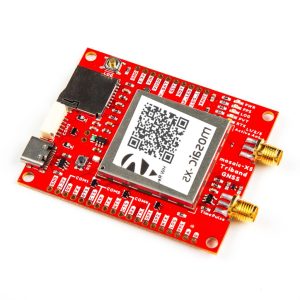Description
This comprehensive solution integrates CAN connectivity, an RM3100 magnetometer, a DPS310 barometer, and a Wi-Fi module, providing seamless access to the Mosaic-X5’s web server capabilities on the go. All these features are packed into a sleek, lightweight plastic enclosure. Our innovative design combines the antenna, receiver, and CAN node into one unit, offering a space-efficient and lightweight alternative to traditional active antennas, while eliminating signal degradation associated with u.Fl/SMA connectors and long cables.
Mosaic-X5 CAN GPS represents the pinnacle of GPS technology, integrating advanced features and seamless connectivity to deliver real-time tracking and monitoring capabilities. Whether you’re managing a fleet of vehicles, monitoring equipment in remote locations, or ensuring the security of valuable assets, Mosaic-X5 offers a comprehensive solution tailored to your needs.
Real-Time Tracking: With Mosaic-X5, you can track the exact location of your assets in real time, allowing for precise monitoring and efficient route planning.
- CAN Integration: The integration of Controller Area Network (CAN) technology enables seamless communication with vehicle systems, providing valuable data on fuel consumption, engine performance, and diagnostics.
- Geofencing: Create virtual boundaries and receive instant alerts when assets enter or exit predefined areas, enhancing security and operational control.
- Advanced Mapping: Mosaic-X5 utilizes cutting-edge mapping technology to provide detailed maps, satellite imagery, and geospatial data for enhanced navigation and decision-making.
- Remote Diagnostics: Monitor the health and performance of vehicles or equipment remotely, allowing for proactive maintenance and minimizing downtime.
Benefits of Mosaic-X5 CAN GPS
- Optimized Fleet Management: Improve fleet efficiency, reduce fuel costs, and enhance driver safety by leveraging Mosaic-X5’s comprehensive tracking and analytics capabilities.
- Enhanced Security: Protect valuable assets with geofencing, tamper alerts, and remote monitoring features, ensuring peace of mind and proactive security measures.
- Increased Productivity: Streamline operations and optimize resource allocation with real-time data insights, actionable reports, and automated alerts for critical events.
- Cost Savings: By reducing fuel consumption, minimizing downtime, and improving overall asset utilization, Mosaic-X5 helps businesses achieve significant cost savings over time.
What is a Mosaic CAN GNSS?
The Mosaic CAN GNSS is an advanced Global Navigation Satellite System (GNSS) receiver module that integrates with Controller Area Network (CAN) technology. It provides high-precision positioning data and robust performance for a variety of applications such as automotive systems, robotics, and industrial automation, enabling seamless communication and data transfer within complex systems.
How does Mosaic CAN GNSS differ from traditional GNSS receivers?
Unlike traditional GNSS receivers, the Mosaic CAN GNSS module combines the benefits of high-precision satellite positioning with the versatility of CAN bus communication. This integration allows for efficient data exchange in real-time, reduced wiring complexity, and enhanced synchronization across multiple devices, making it ideal for modern applications that require precise and reliable positioning data.
How can I integrate Mosaic CAN GNSS into my existing system?
Integrating the Mosaic CAN GNSS into your existing system is straightforward due to its compatibility with standard CAN bus protocols. You can connect the module to your system’s CAN network, allowing it to communicate and exchange data seamlessly with other CAN-enabled devices. Comprehensive documentation and support materials are available to assist you with the setup and integration process, ensuring smooth implementation and operation.
What applications are best suited for Mosaic CAN GNSS?
The Mosaic CAN GNSS is ideal for a variety of applications that require high-precision positioning and robust communication. These include:
Automotive industry Enhancing navigation systems, vehicle safety features, and automation.
Unmanned Aerial Vehicles (UAVs) Providing accurate positioning for autonomous flight and data collection. Industrial automation Enabling precise control and monitoring of industrial machinery and processes. Robotics Facilitating accurate navigation and operation in complex environments. Surveying and mapping Supporting high-precision geospatial data collection and mapping.
How can I integrate Mosaic CAN GNSS into my existing system?
Integrating the Mosaic CAN GNSS into your existing system is straightforward. The module is designed to be compatible with standard CAN bus protocols, allowing for easy connection to your system’s CAN network. Follow these steps for integration:
Connect to CAN network Attach the GNSS module to your system’s CAN bus using the appropriate connectors. Configure settings Use the provided software tools to configure the module’s settings according to your requirements. Data exchange Enable data exchange with other CAN-enabled devices in your network.
What benefits does CAN integration provide for GNSS systems?
CAN integration offers several benefits for GNSS systems, including:
Efficient data communication Real-time data sharing and reduced latency across multiple devices. Simplified wiring Less cabling is required, which reduces complexity and potential points of failure. Enhanced control and coordination Easier synchronization and management of multiple devices within the network. Scalability Easily adds new devices to the CAN network without significant changes to the existing system.







